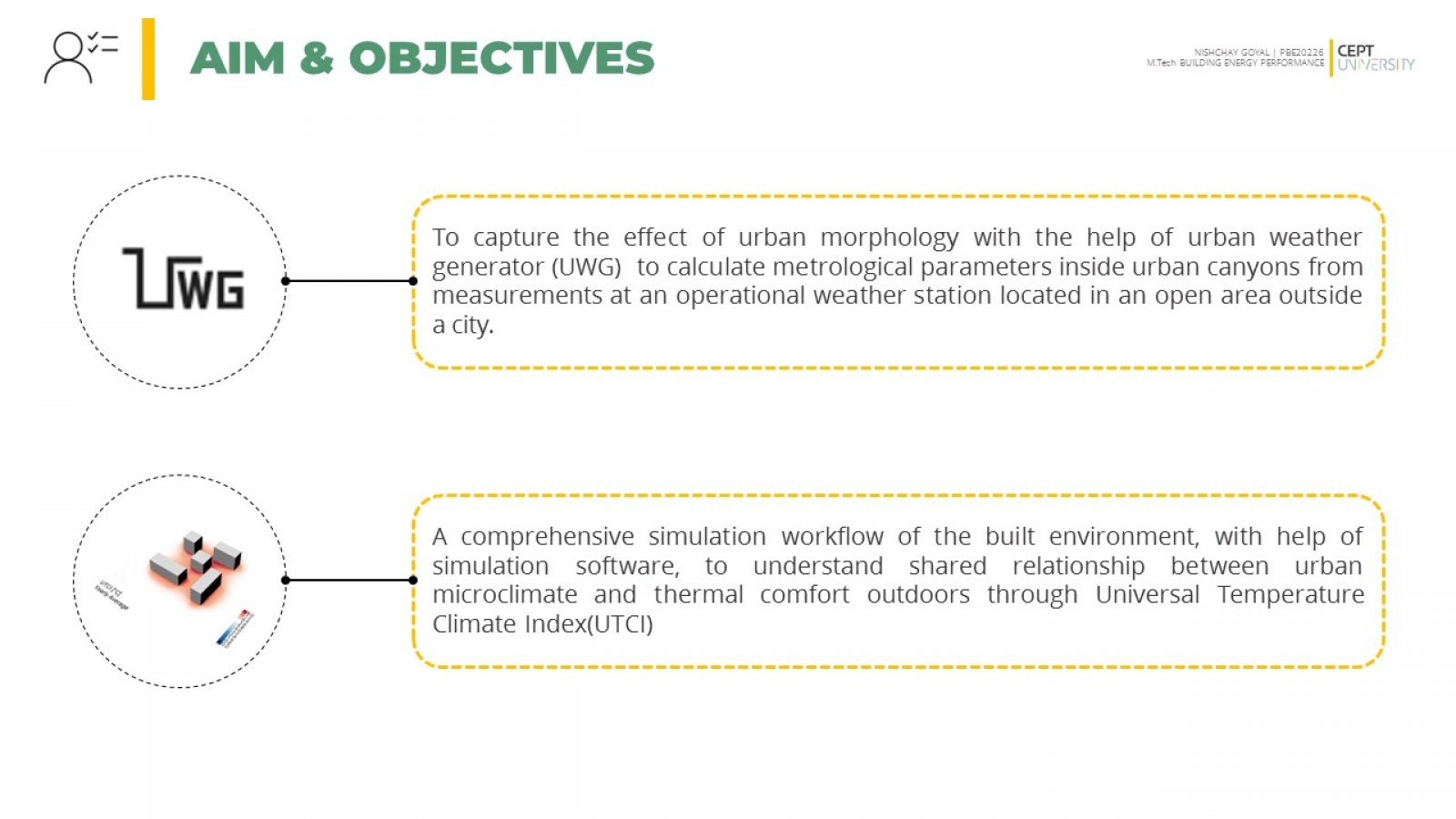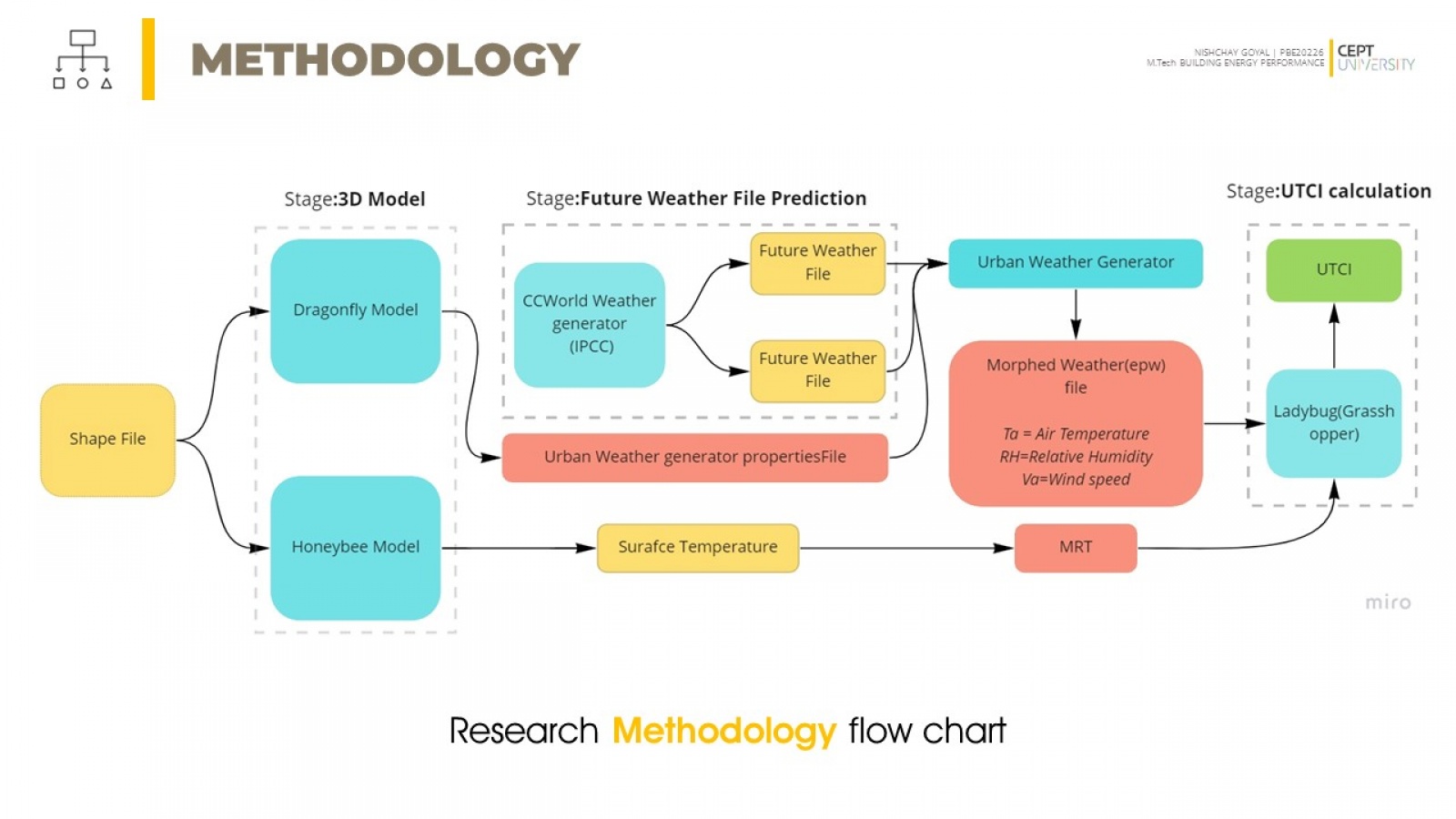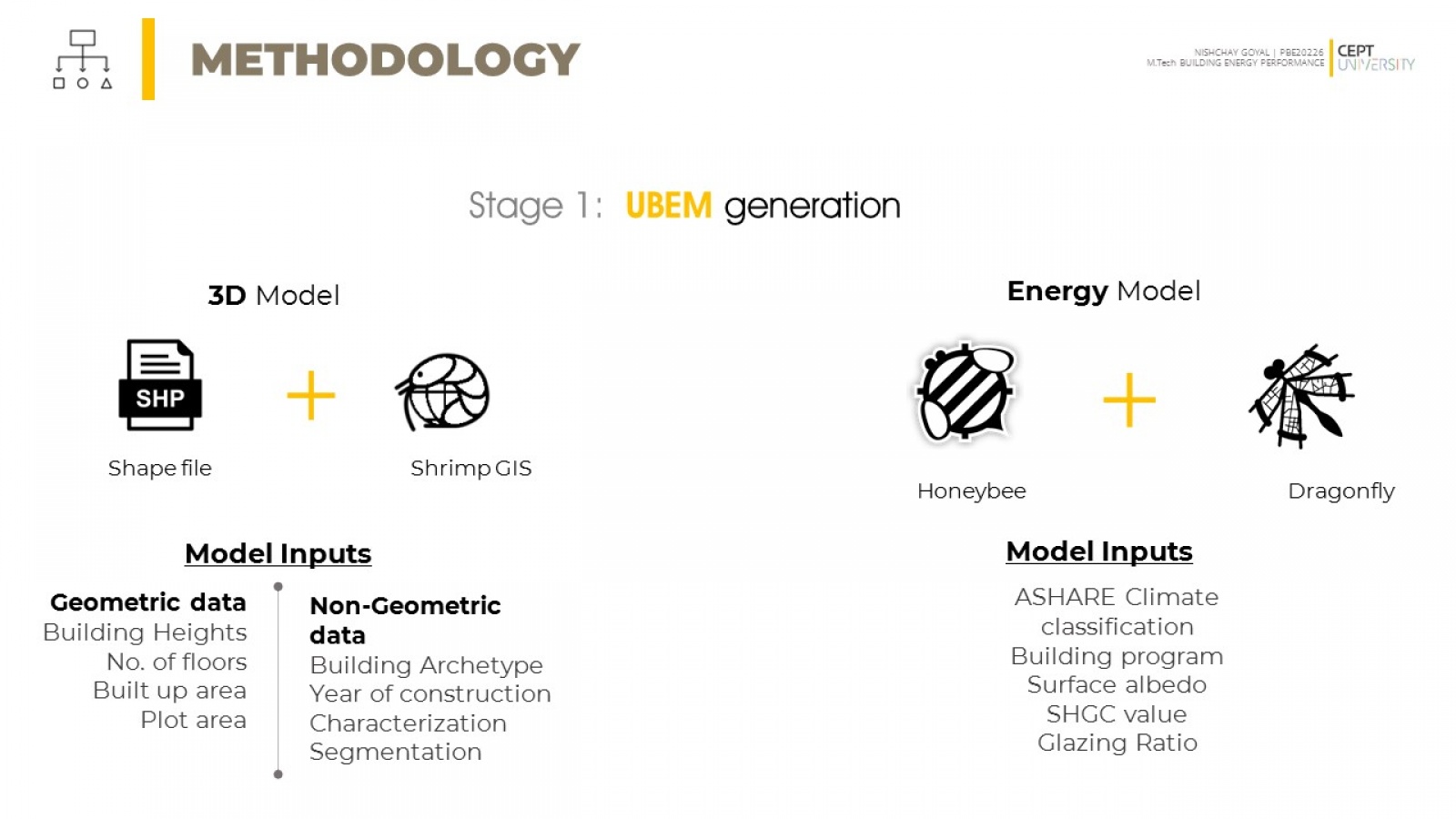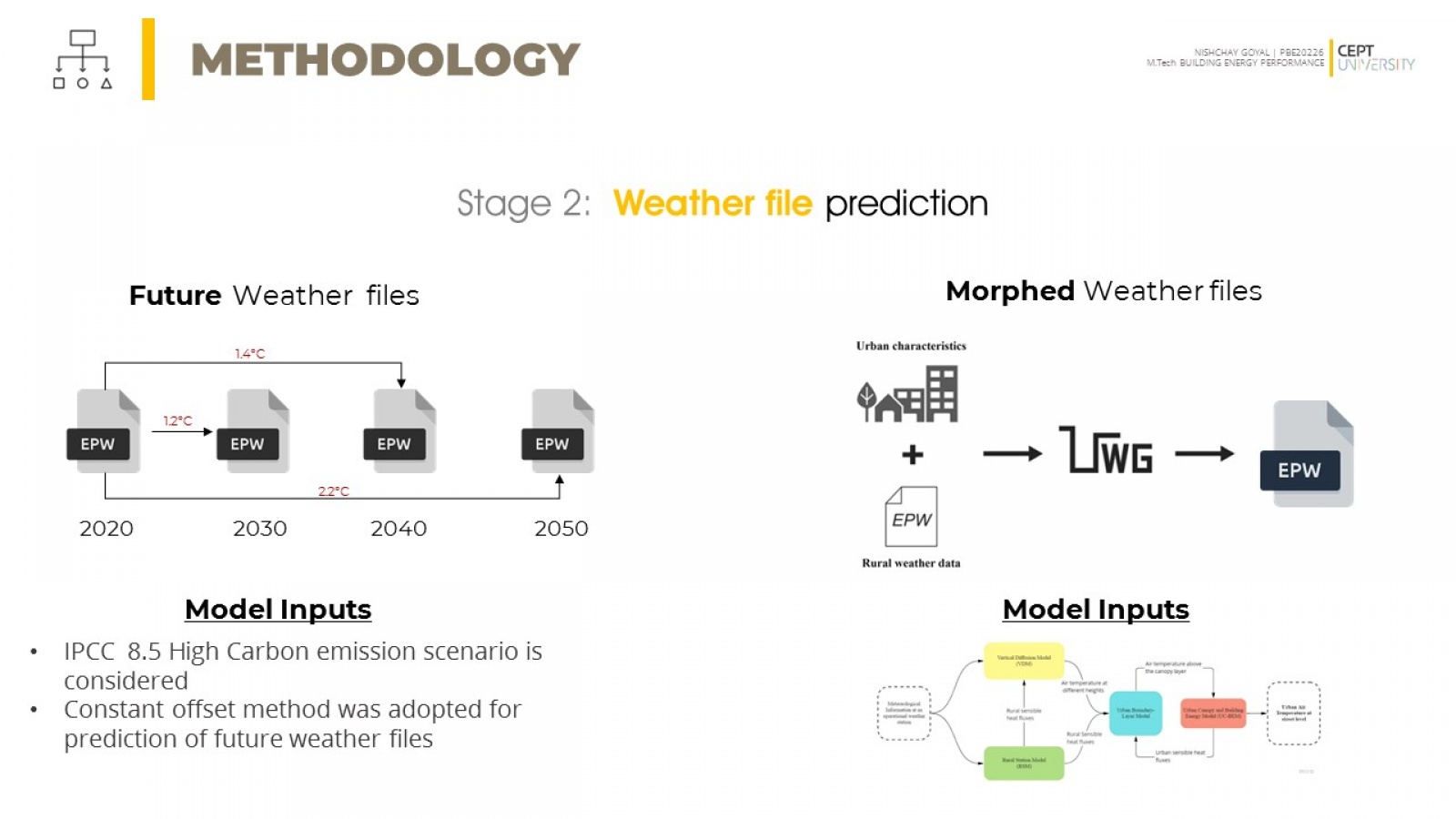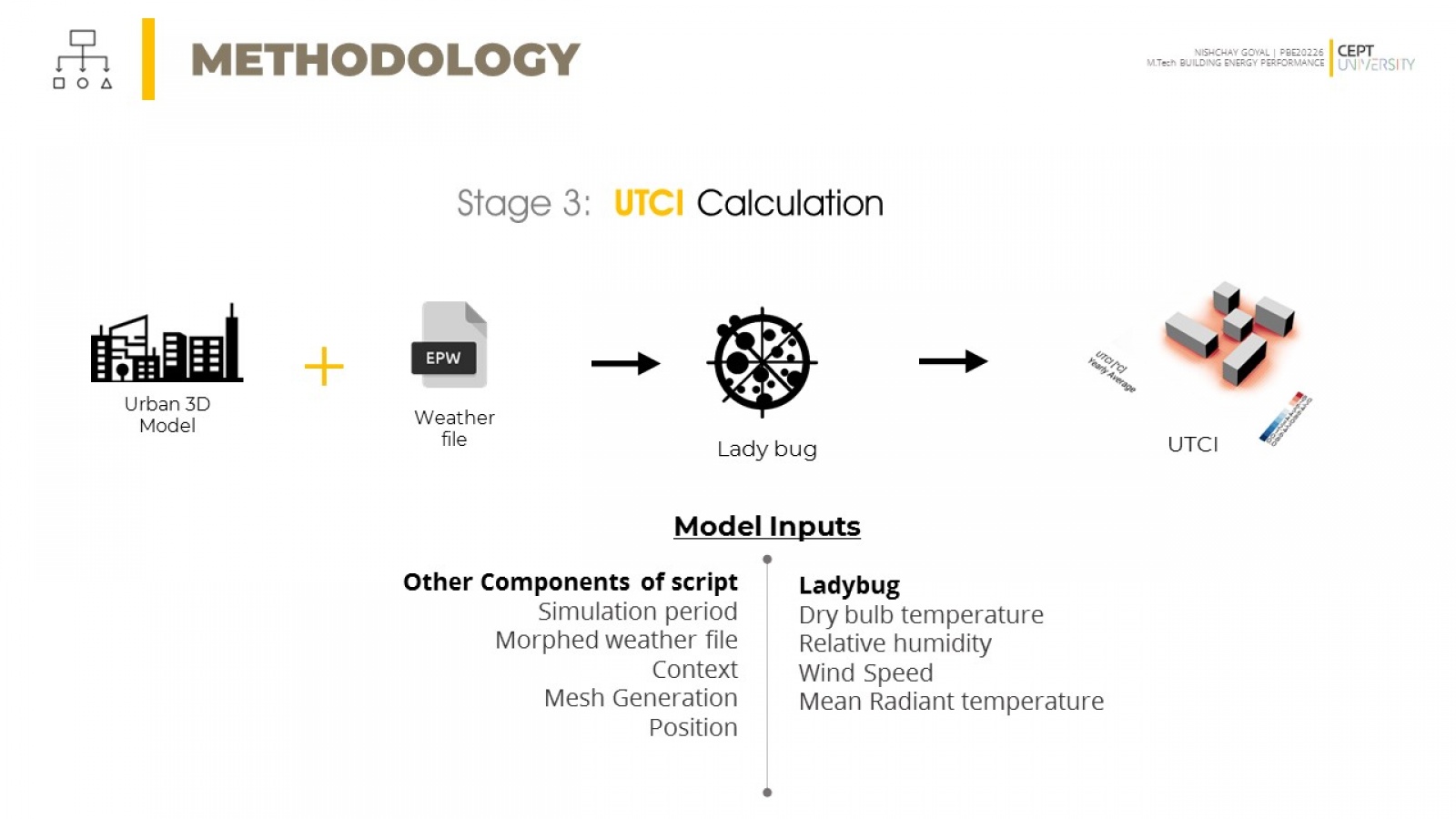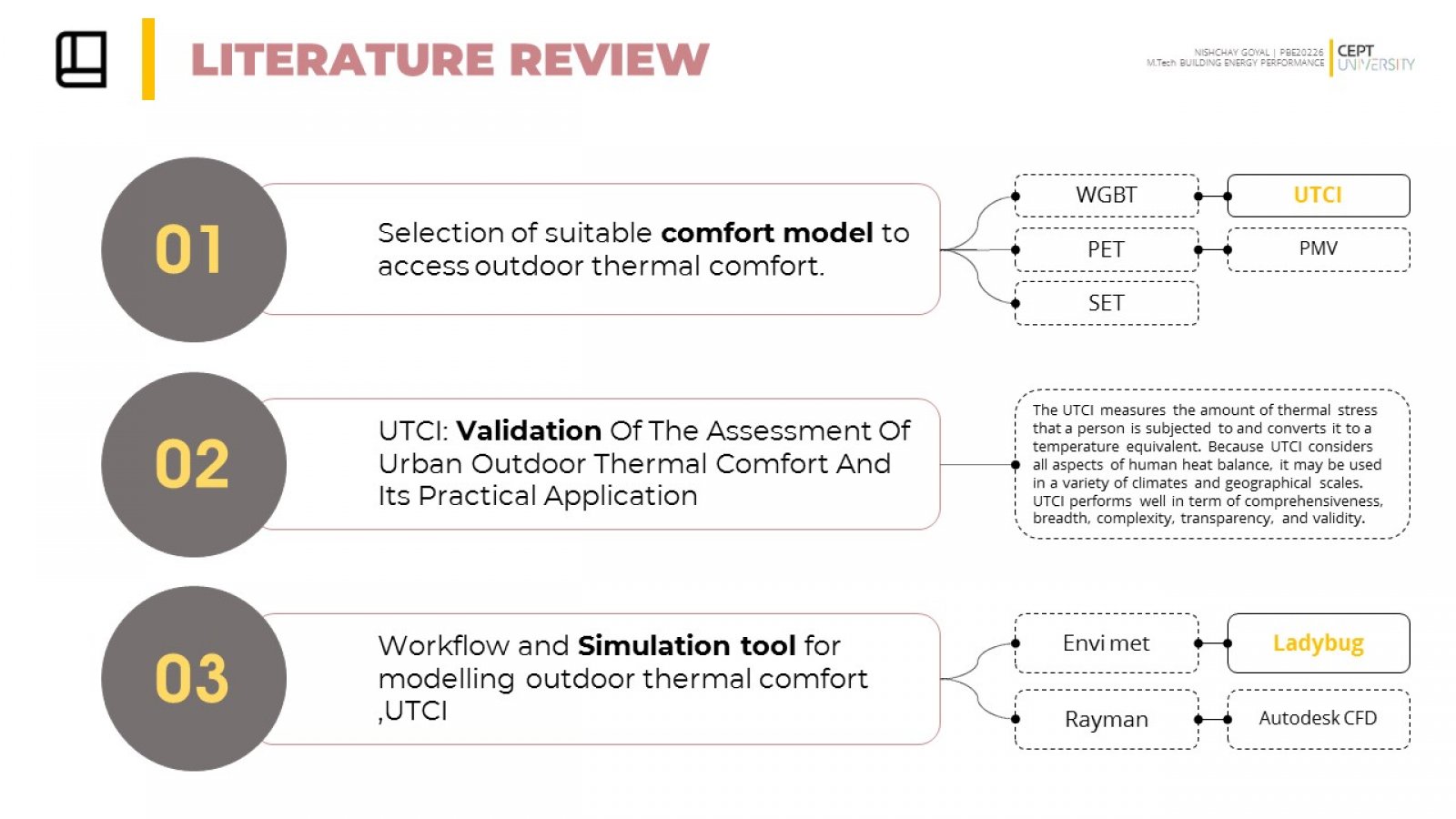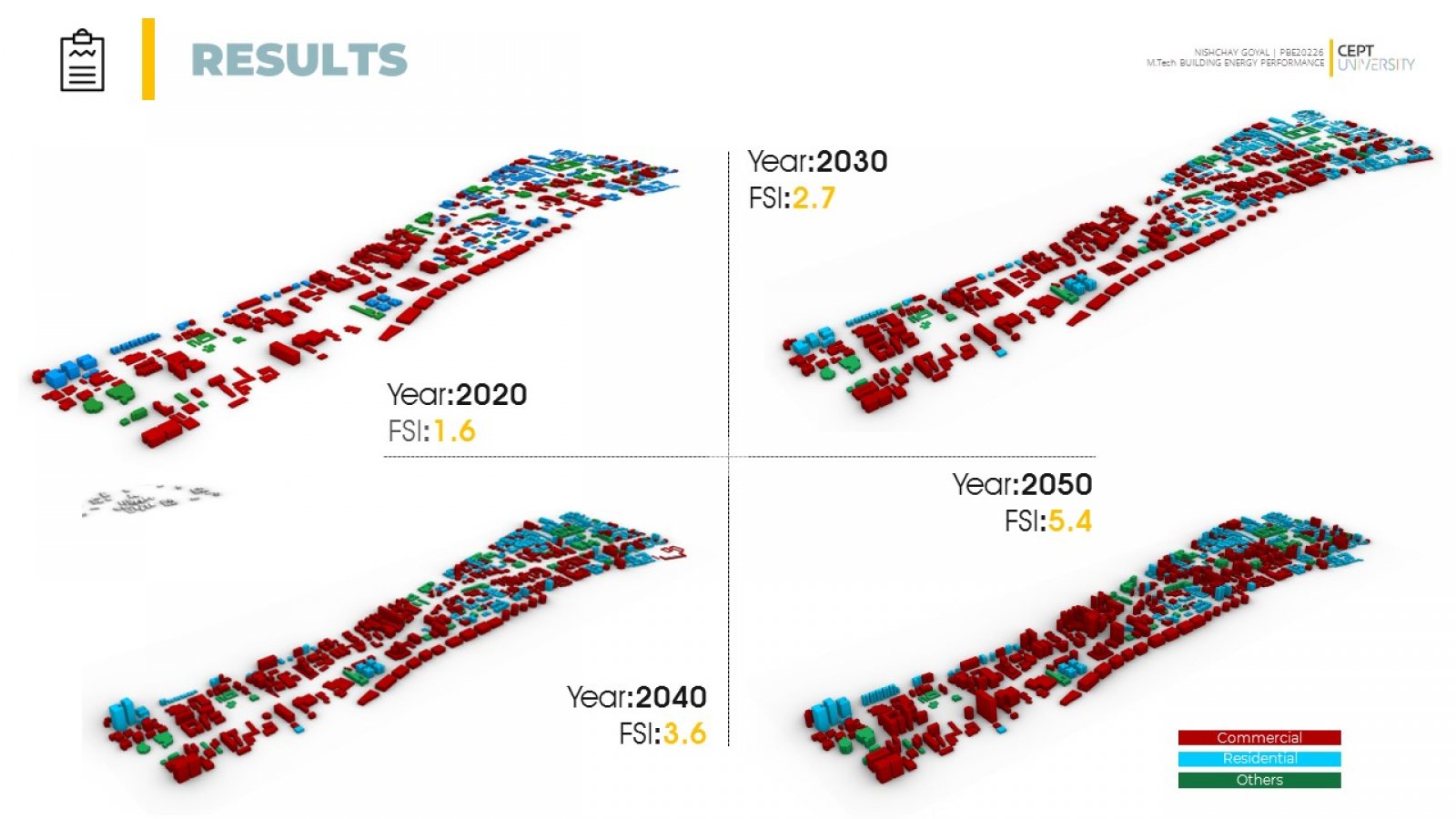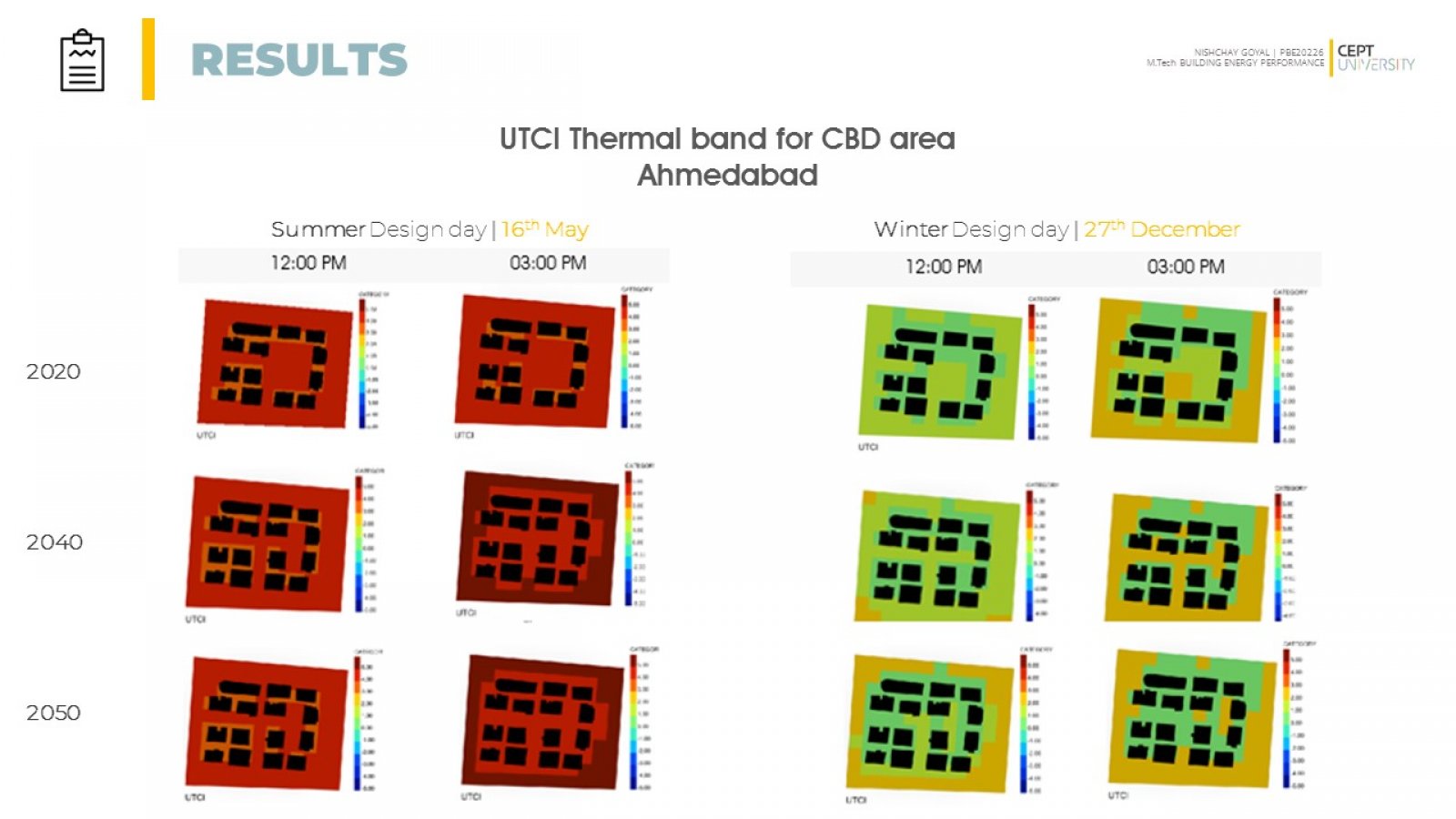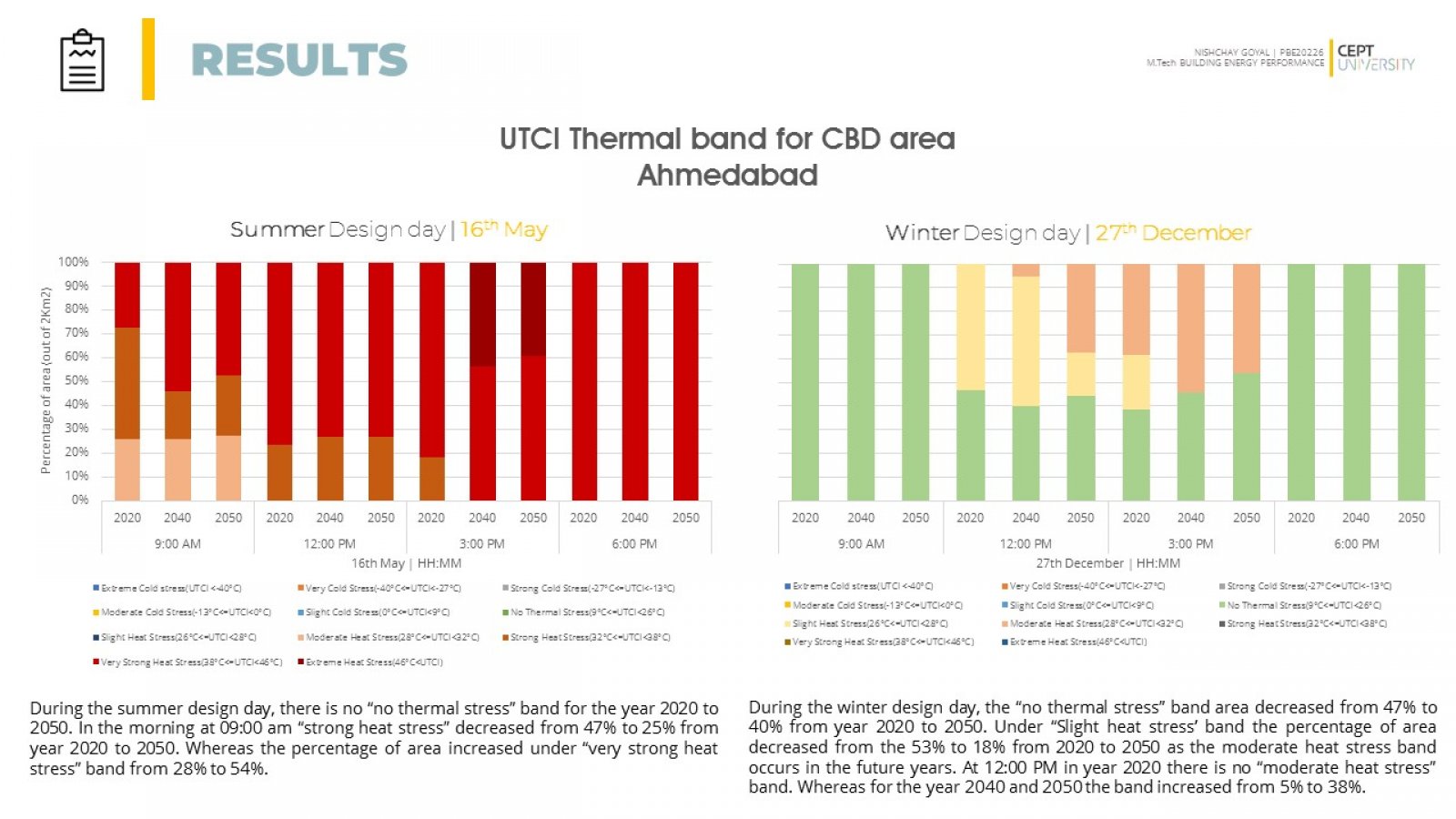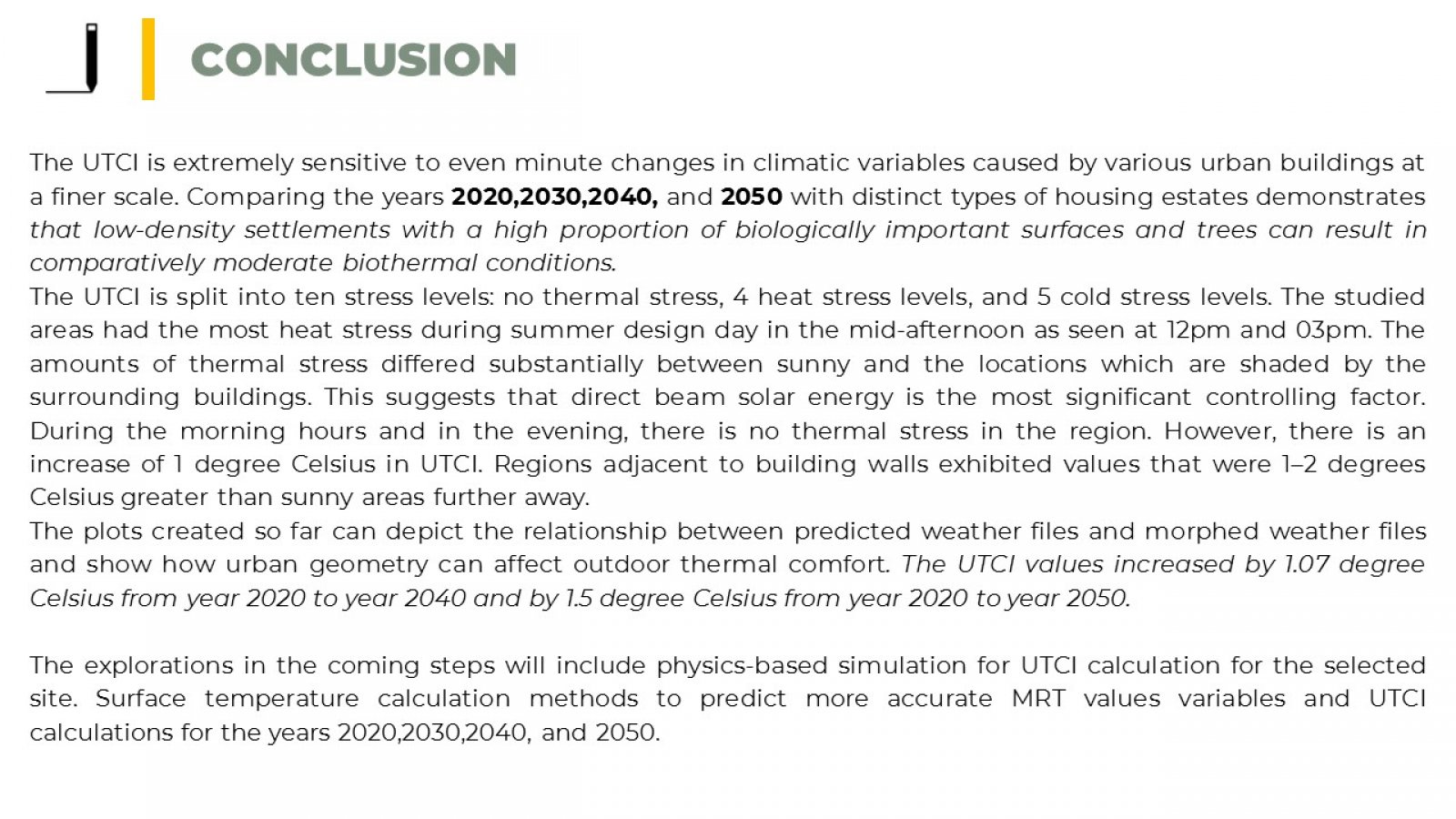Your browser is out-of-date!
For a richer surfing experience on our website, please update your browser. Update my browser now!
For a richer surfing experience on our website, please update your browser. Update my browser now!
The average world temperature has risen by 0.91° Celsius in the last 100 years. This effect is more profound in metropolitan areas as compared to rural areas due to alterations in their natural fabric. Ahmedabad, located at 23.03°N 72.58°E, faces extreme summers with a temperature range of 46°C and 28°C. This paper presents a study that aims to assess the outdoor thermal comfort of the proposed Central Business District (CBD) area of Ahmedabad, India, and the impact of building densification on outdoor human comfort levels. The study area is about 1.28 sq km. The CBD area consists of 47% Commercial and 24% residential buildings out of a total of 0.31 million sq mt. of total floor space. The remaining 24% of the building are mixed-used, institutional, and health care. The study was carried out for the scenario for the years 2020, 2030, 2040, and 2050. The study relied on morphed TMY files derived from the established methodology. The study limits itself to heat stress due to weather and building configurations, and it does not account for anthropogenic heat rejected from the building due to cooling systems. The Universal Thermal Climate Index (UTCI), which depicts the heat stress on humans produced by meteorological circumstances, was adopted to indicate thermal comfort and thermal stress. The building geometry data was collected from the CBD planning and regenerated in Rhino7.9. With the Dragonfly and Urban Weather Generator (UWG) tools, morphed weather files are generated for the simulations. Further, using these morphed weather (.epw) files, the ladybug (grasshopper plug-in) tool is used to compute UTCI. The study shows that outdoor thermal comfort was reduced from 2773(hrs.) to 2362(hrs.) under the 'no stress zone' in UTCI from the year 2020 to 2050. In the year 2050, the predicted floor area is increased by 15%. Hence for a decrease of 1% in comfort hours, there is an increase of 0.88% in the floor space area.
